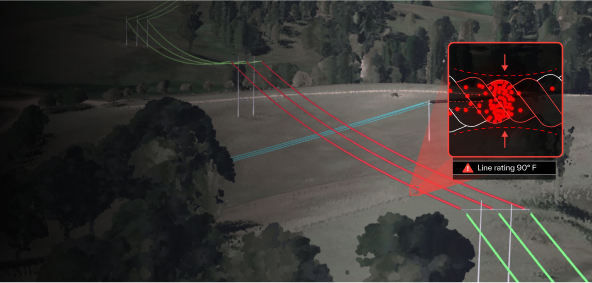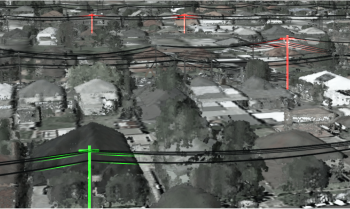Stop reacting to
high winds
heavy rain
excessive heat
cold snaps
load growth
outage risks
Predictive modeling software for proactive network governance. Quantify and prove network needs in any scenario. Run precise analyses in hours and days instead of months or years in the field.
Trusted by global utilities to keep networks safe and online in hurricanes, heat waves, hail storms, and more.
Outages and safety incidents are no surprise when you can only see a small fraction of your network at a time — and only see your assets and vegetation on their best behavior.
You’re trying to prioritize equipment maintenance, trim jobs, and capital projects — but you can only prioritize solutions to risks you can see.
You need to understand exactly how your assets will respond to severe weather — but field surveys only happen on fair weather days.
You need to prove your plan will actually solve reliability and resilience challenges — but measuring outcomes looks like guesswork.
Network governance is 80% reactive and 20% proactive. For utilities using Neara, it’s the other way around.
1. Generate behaviorally identical digital model of your entire network.
Every asset bends, deforms, and sways in response to >100mph winds, flash floods, and more exactly as it does in field. Correct GIS errors and set the record straight on every asset location, configuration, and clearance measurement.


2. Execute network-wide simulation analyses so you know exactly what to expect in the field.
Simulate scenarios like severe weather and new network design to pinpoint key vulnerabilities and test-drive potential remediation solutions before spending a dollar or breaking ground in the field.


3. Run reports that quantify network needs and measure outcomes.
Need to validate your vegetation budget number? Demonstrate which poles actually need replacement? Justify your new transmission line? Objectively define network needs with demonstrable data regulators and other key stakeholders will understand.



How To Fix The Greatest Threat to Reliability and Resilience
A Primer on Digital Risk Mitigation
See HowAnswer any question with Neara
If SE wind speeds exceed 70mph, which trees will be fall-in risks?
Which pole failures will cause the most outages in a storm?
Where will floodwaters recede fastest?
Where exactly would steel poles work best?
Where are conductor clash risks close to major highways?
What’s the optimal span length for a new line over hilly terrain?
Which assets are missing from my GIS?
Explore Solutions
2x
Without building new infrastructure
2x existing network capacity

 Renewable Energy & Decarbonization
Renewable Energy & Decarbonization
Power your network to a whole new level
- Conduct cost-benefit analyses in minutes, not months
- Eliminate thousands of field visits
- Save millions of dollars annually






 ';
';














